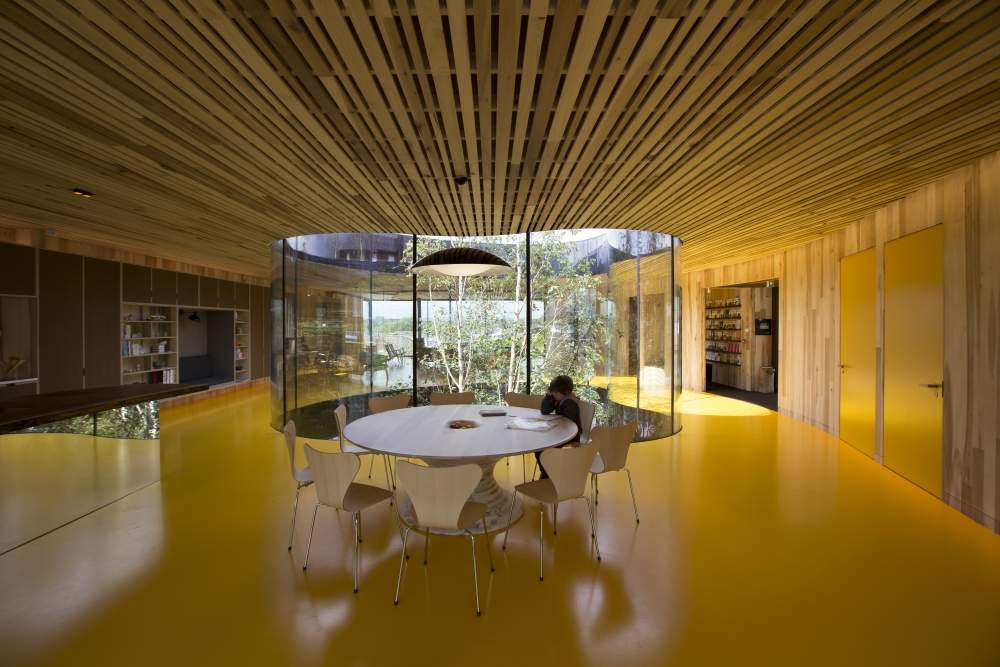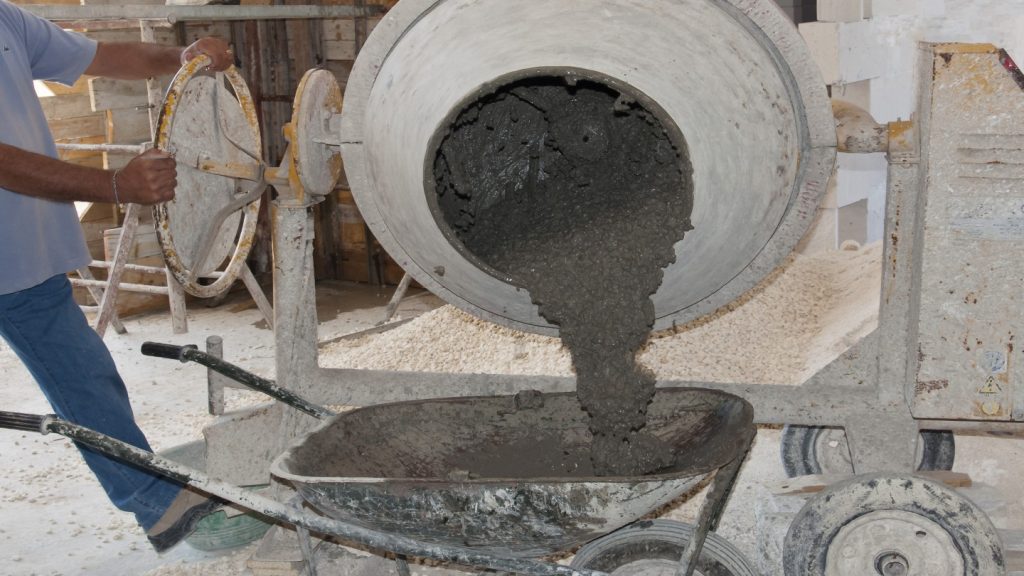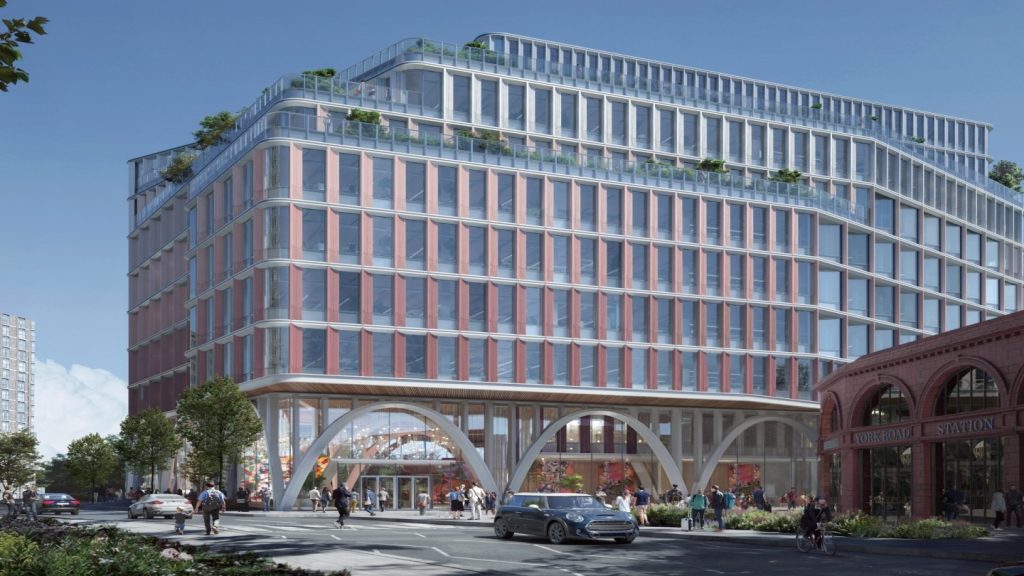
Talk to any modern architect and chances are the subject of ‘social responsibility’ will arise at some point in the conversation. In the past, this likely referred to the curious idea that through the built environment architects could transcend mere practical concerns and be engineers of social change.
In 2017, ‘social responsibility’ has more often come to mean sustainable buildings with a low-carbon footprint and in harmony with their natural surroundings. Maggie’s Oldham satisfies both sets of criteria.
The building, which offers practical and emotional support to people living with cancer, is the first in the world to be made from hardwood cross-laminated timber (CLT). Designed by dRMM Architects with support from the American Hardwood Export Council (AHEC), it is constructed from tulipwood.
Pioneered by dRMM, AHEC and design and engineering consultancy Arup, tulipwood is around 70% stronger in bending than a typical CLT-grade softwood. According to the Wood Housing Humanity Report 2015, wood is also known to reduce blood pressure, heart rates and patient recovery times.
“From the Oldham project inception we knew it was the right material for Maggie’s, not only structurally and visually, but conceptually,” explains dRMM co-founder Alex de Rijke.
“The environmental, structural and visual qualities are demonstrated explicitly at dRMM’s Maggie’s; a manifesto for wood as the natural choice for contemporary architecture of physical and psychological well-being.”
How well do you really know your competitors?
Access the most comprehensive Company Profiles on the market, powered by GlobalData. Save hours of research. Gain competitive edge.

Thank you!
Your download email will arrive shortly
Not ready to buy yet? Download a free sample
We are confident about the unique quality of our Company Profiles. However, we want you to make the most beneficial decision for your business, so we offer a free sample that you can download by submitting the below form
By GlobalDataAn architecture of hope: the philosophy behind Maggie’s Centres
dRMM had large shoes to fill. Richard Rogers, Zaha Hadid and Lord Norman Foster are just three of the storied architects to have designed Maggie’s Centres across the UK. The brainchild of Maggie Keswick Jencks, who died of cancer in 1995, the charity’s buildings in the grounds of NHS hospitals eschew the utilitarian gloom of traditional medical facilities in favour of what Jencks’s husband Charles calls “an architecture of hope”. Maggie’s Centres celebrated its 20th anniversary in 2016.
Maggie’s Oldham continues that legacy. For once, the word ‘holistic’, as used by de Rijke to describe the building, is well chosen. The centres owe much to a tradition of healthcare architecture dating back as far as ancient Greece, where the health of the mind is inextricably linked to that of the body.
“Maggie’s Oldham has a built-in, very visible holistic design message that supports the central aims of the project – to uplift and offer hope to people living with cancer,” says de Rijke. “The applications for sustainably grown hardwood, particularly fast-growing tulipwood CLT, are endless.”
In addition to its aesthetic and palliative effects, hardwood CLT’s strength-to-weight ratio – American tulipwood is roughly three times stronger and stiffer in ‘rolling shear’ than its softwood equivalent – makes it ideal for construction. The first public experiment with the material was the Endless Stair installation at the 2013 London Design Festival, capable of supporting 100 people at any one time.
“We were inspired by Escher’s staircase lithographs and, working with Arup, developed an endlessly reconfigurable freestanding structure of interlocking flights,” explains de Rijke, an early advocate of hardwood CLT. “We chose tulipwood as it’s among the most prolific and economic US hardwoods… we wanted to transform its status into a beautiful alternative to default softwood and hardwoods.”
In terms of sustainability, tulipwood – the fourth most abundant timber in US hardwood forests – grows and regenerates quickly in the wild. Maggie’s Oldham contains 27.6m3 of American tulipwood and 1.1m3 of American ash; AHEC claims the logs used to build it will grow back in just 120 seconds.
Tulipwood also stores carbon. According to AHEC, when the project materials reached the factory for fabrication, they were storing more CO2 than had been generated by processing and transport.
Healing architecture: designing Maggie’s Oldham
So to Maggie’s Oldham itself, built from more than 20 panels of five-layer, cross-laminated American tulipwood ranging in length from 0.5m−12m. The exterior panels are thermally modified.
Simple and understated, the centre in the grounds of Royal Oldham Hospital sits atop 4m steel legs that support cantilevers and offers panoramic Pennine views. Construction took just 12 months.
“Besides the view and slope, the location was right as it juxtaposes Maggie’s with the hospital, which purports to be a place of healing, but, like others of its era incorporates environmentally unsound materials,” says de Rijke. “Besides being a manifesto to healthy architecture, the centre is a critique of conventional hospital building.”
dRMM summarises its design as a “matchbox on stilts, with a hole through the middle, like a cored apple”. Inside, visitors are encouraged to sit around a central table made from recycled tulipwood. The interior also features a central curved double glazed feature with a tree reaching up through it.
The curve of the interior CLT walls hugs the contours of the glass, and poured resin floors reinforce the sense of flow. In keeping with the building’s eco-friendly spirit, the slatted ceiling is made from leftover tulipwood and the entire structure is naturally ventilated via stoppable holes in the walls.
Maggie’s Oldham had reservations about using tulipwood rather than cheaper spruce, but according to AHEC the material was cost-competitive and proved to be an inspired alternative to standard CLT.
“We explained that the variegated tulipwood and finish quality would allow the wood to be expressed, maximising the psychological and therapeutic benefits of a timber environment,” says project architect Jasmin Sohi. “In addition, the structure would feel like a fine piece of furniture.”
Wooden future: hardwood CLT in architecture and construction
Will Maggie’s Oldham prove to be blueprint for the wider architectural application of tulipwood CLT?
The tree itself is prolific and the timber it produces is strong, light and reasonably priced. dRMM believes it has real potential for public construction projects like schools and university campuses.
US company Middle Tennessee Lumber provided the tulipwood for Maggie’s Oldham. Until now, the majority output of its tulipwood was destined for US mouldings and furniture component producers.
Northland Forest Products supplied the building’s thermo-treated cladding. Thermo-treating is still a relatively small business sector in the US, but it is growing, as Northland CEO Jamey French explains.
“We started in 2007 and today we’re exporting 50% of output, using FSC-certified ash and tulipwood,” says French. “Cladding is the biggest market but it’s also used in furniture, interior panelling, and, given its stability, for radiant floor heating.”
AHEC describes Maggie’s Centre as “a pivotal moment for modern architecture and construction”.
“This structure proves that hardwoods have a role to play in the timber construction revolution,” states AHEC Europe director David Venables. “All our previous projects have been significant projects but this centre proves that a building made of tulipwood CLT is possible, and it can be done on a strict budget and in record time. dRMM also believes in the potential of tulipwood CLT as bringing a revolutionary new element to wood construction.”







